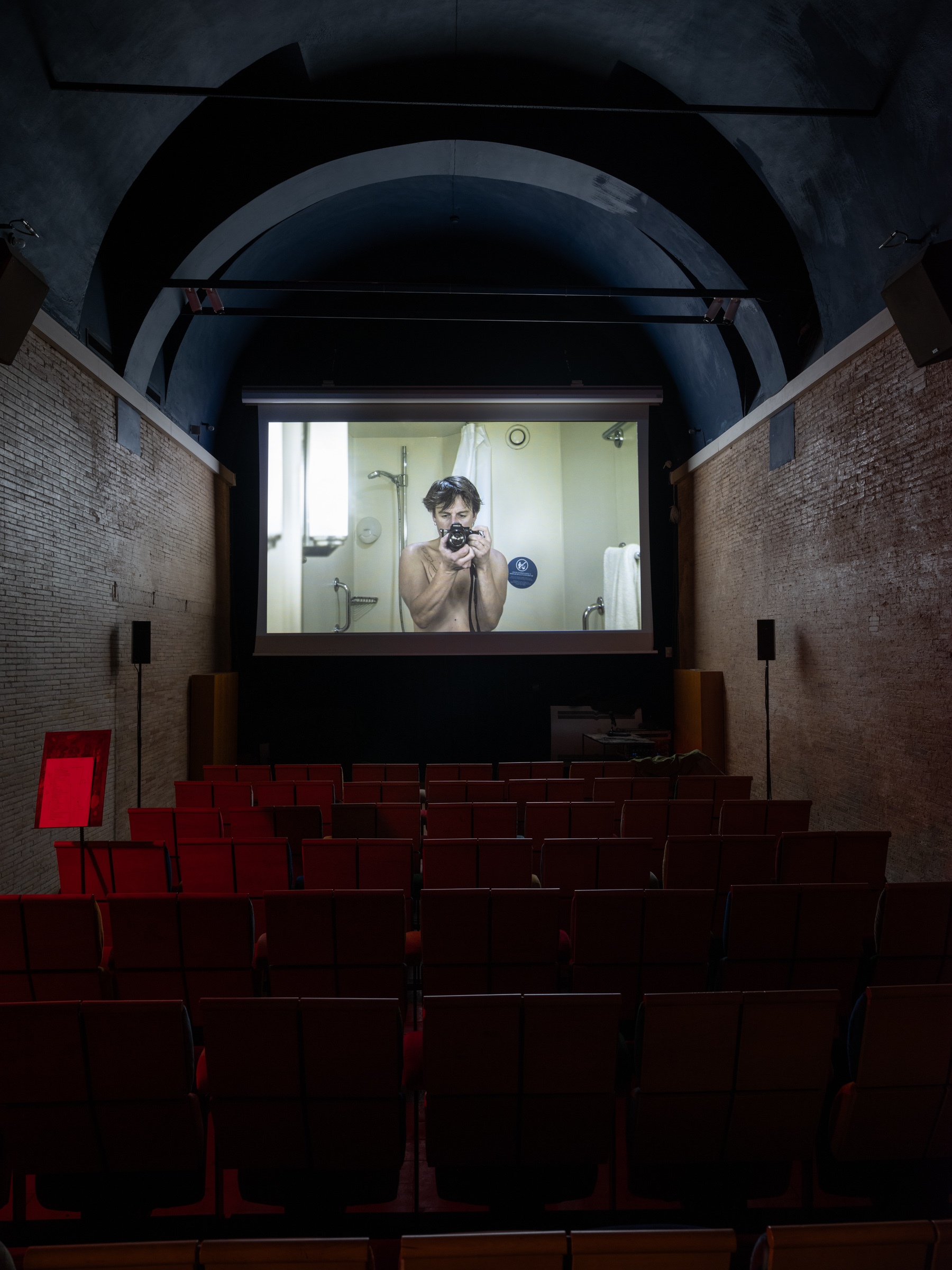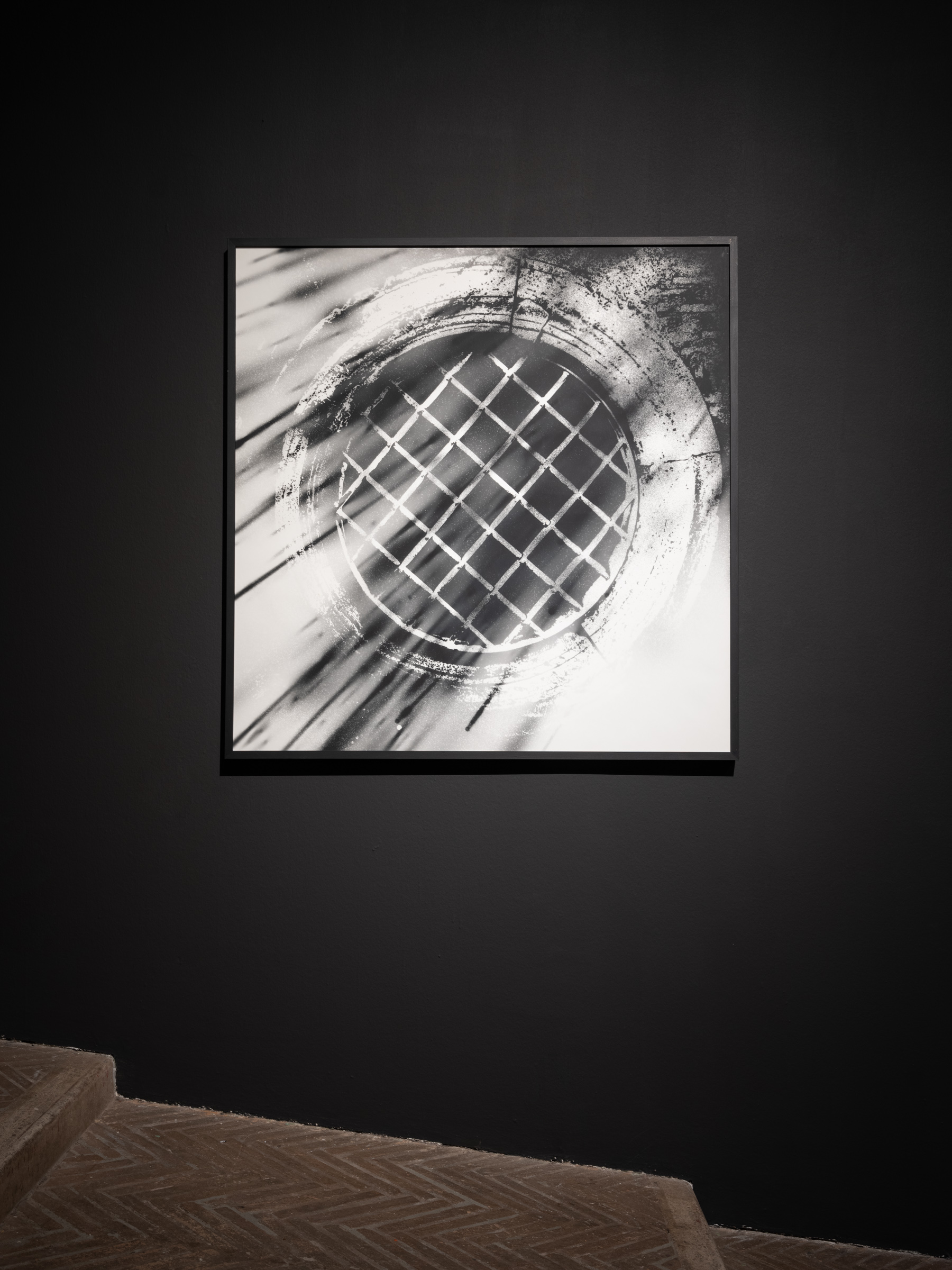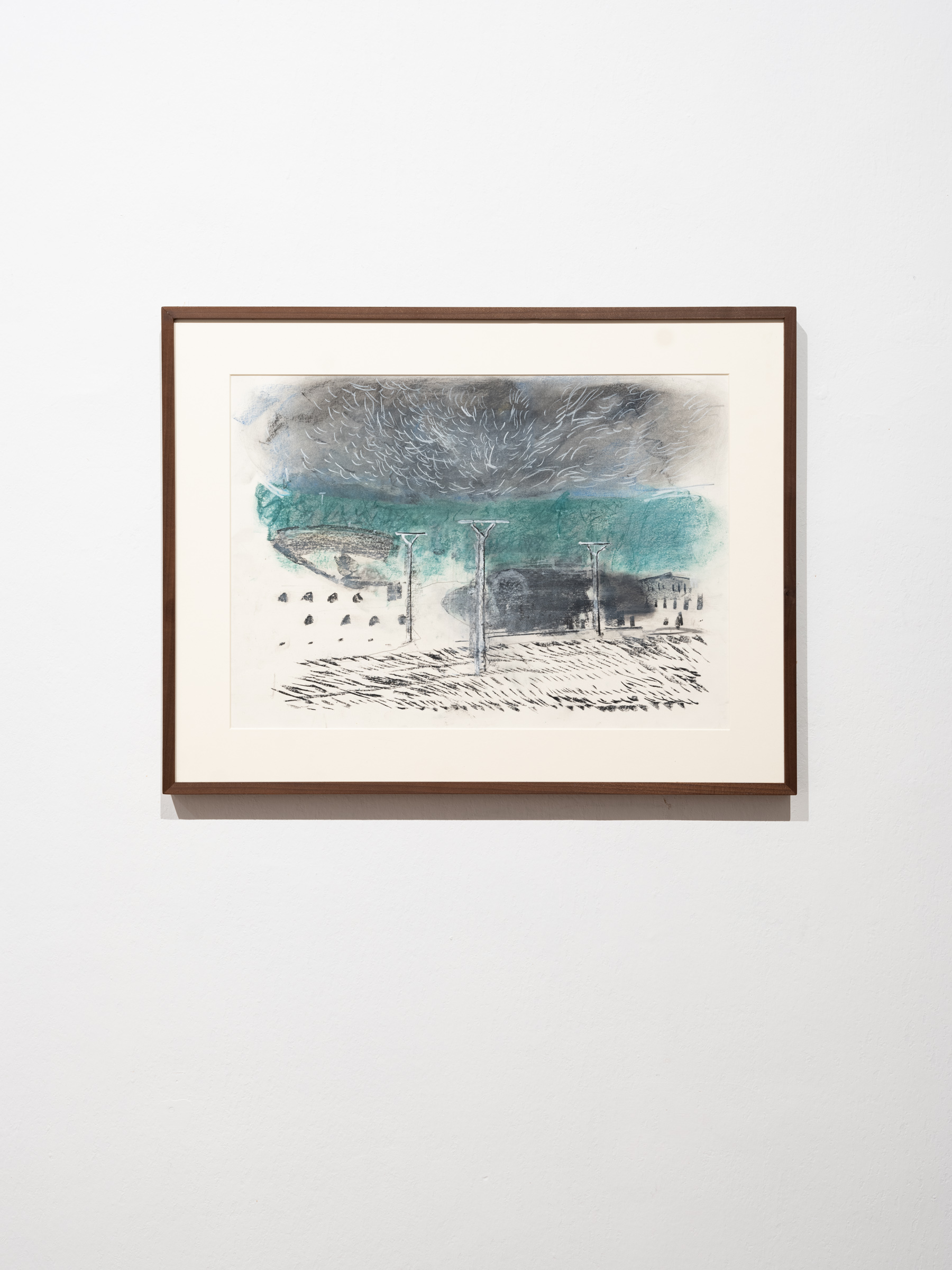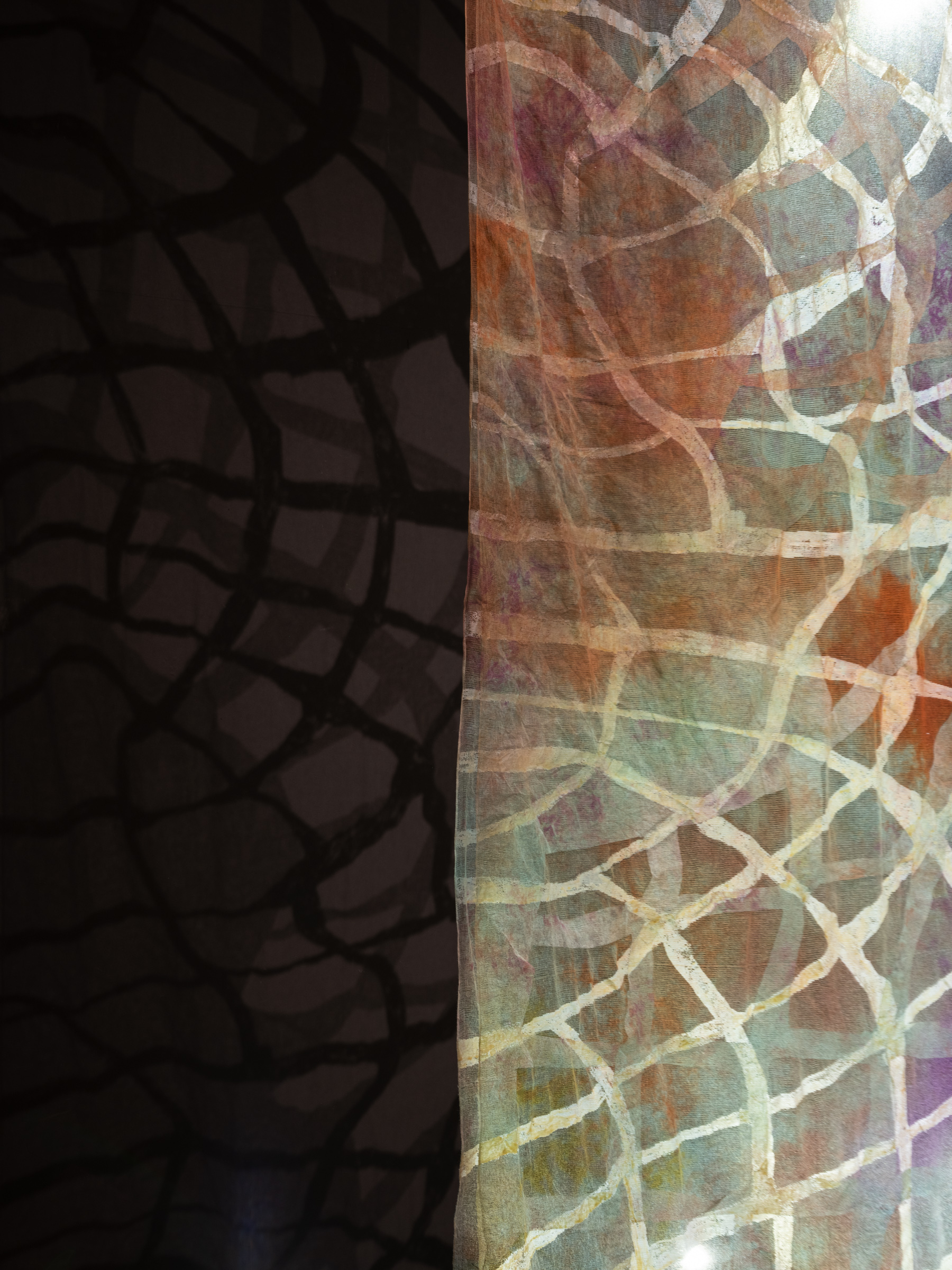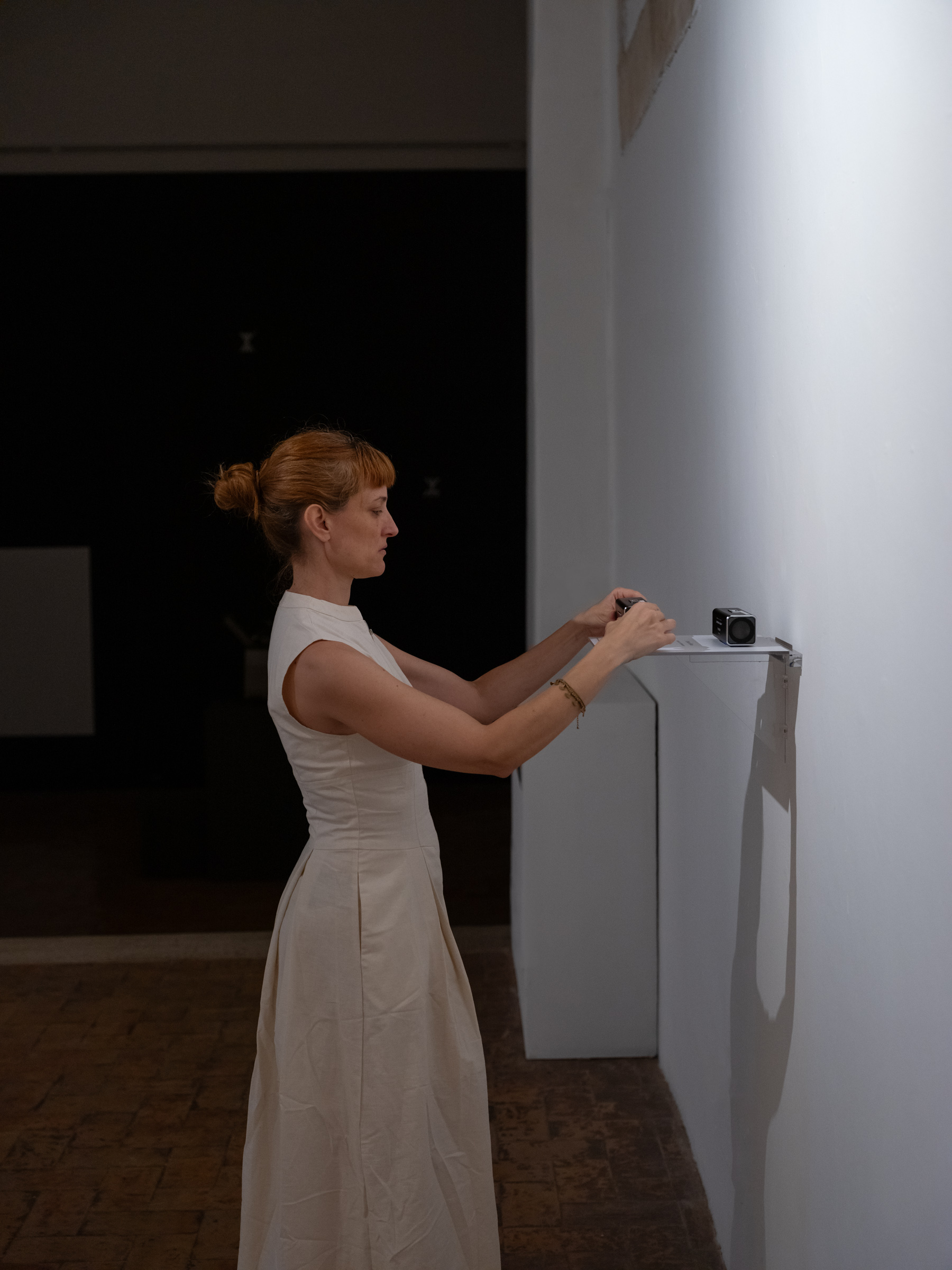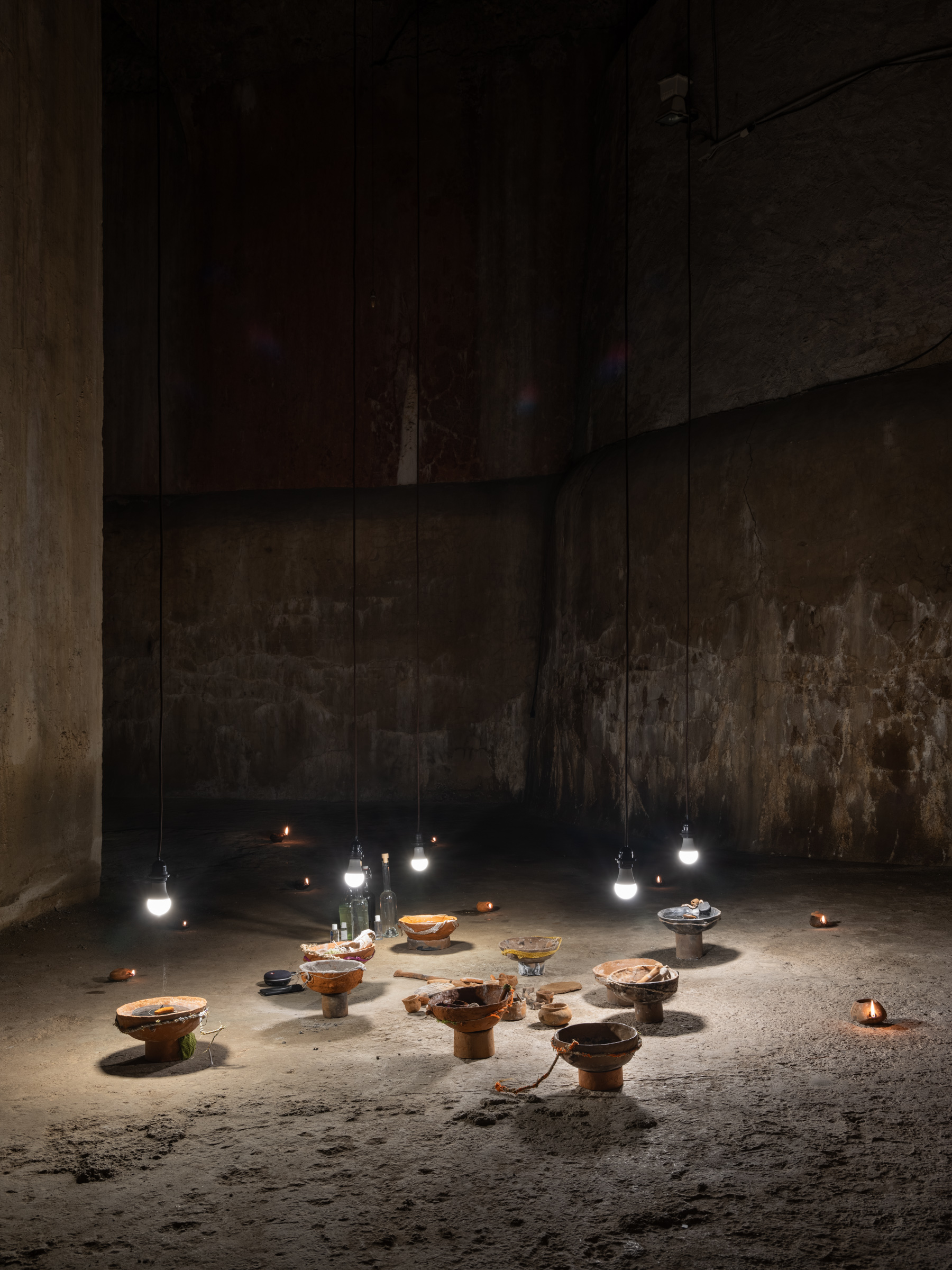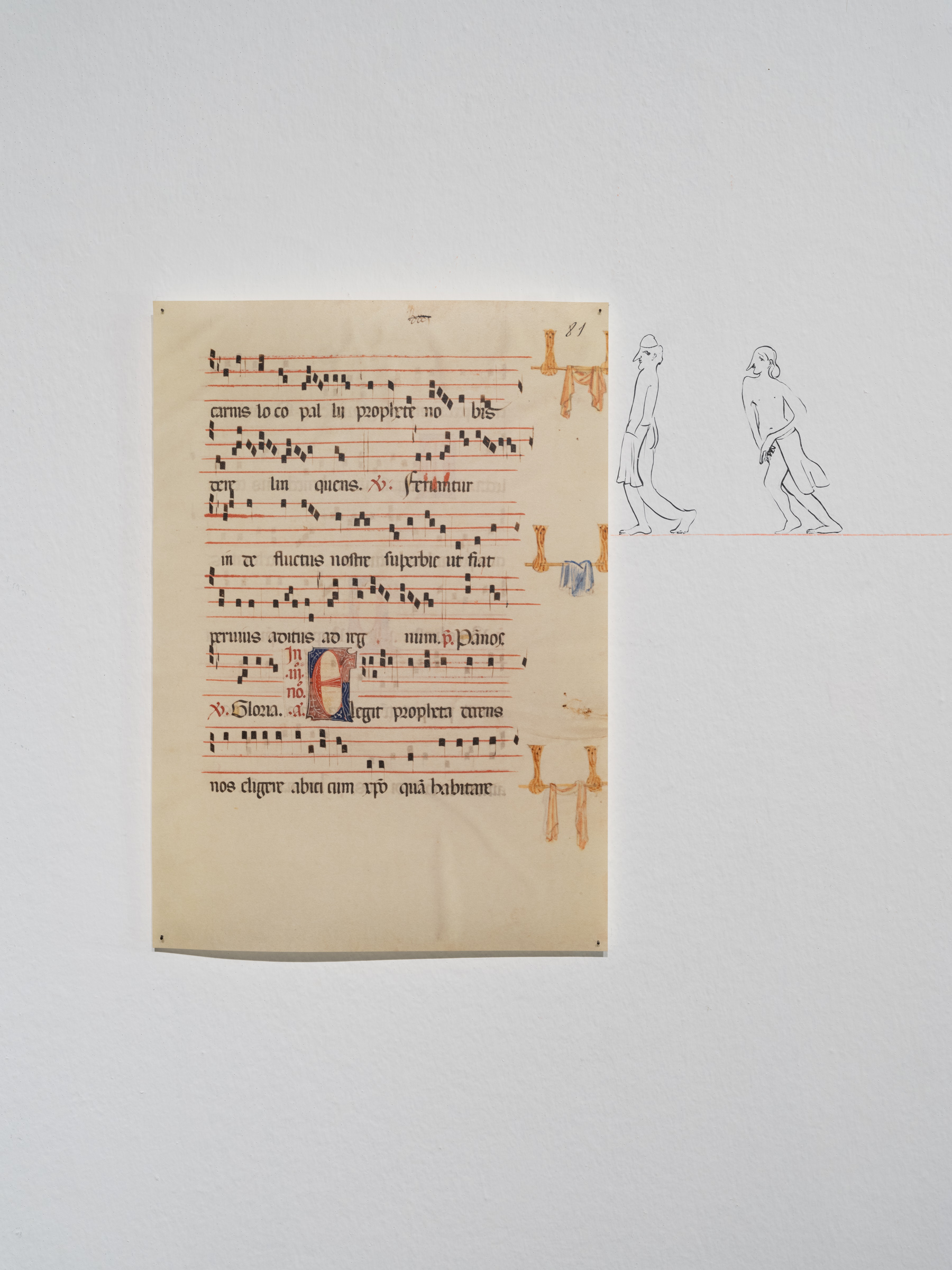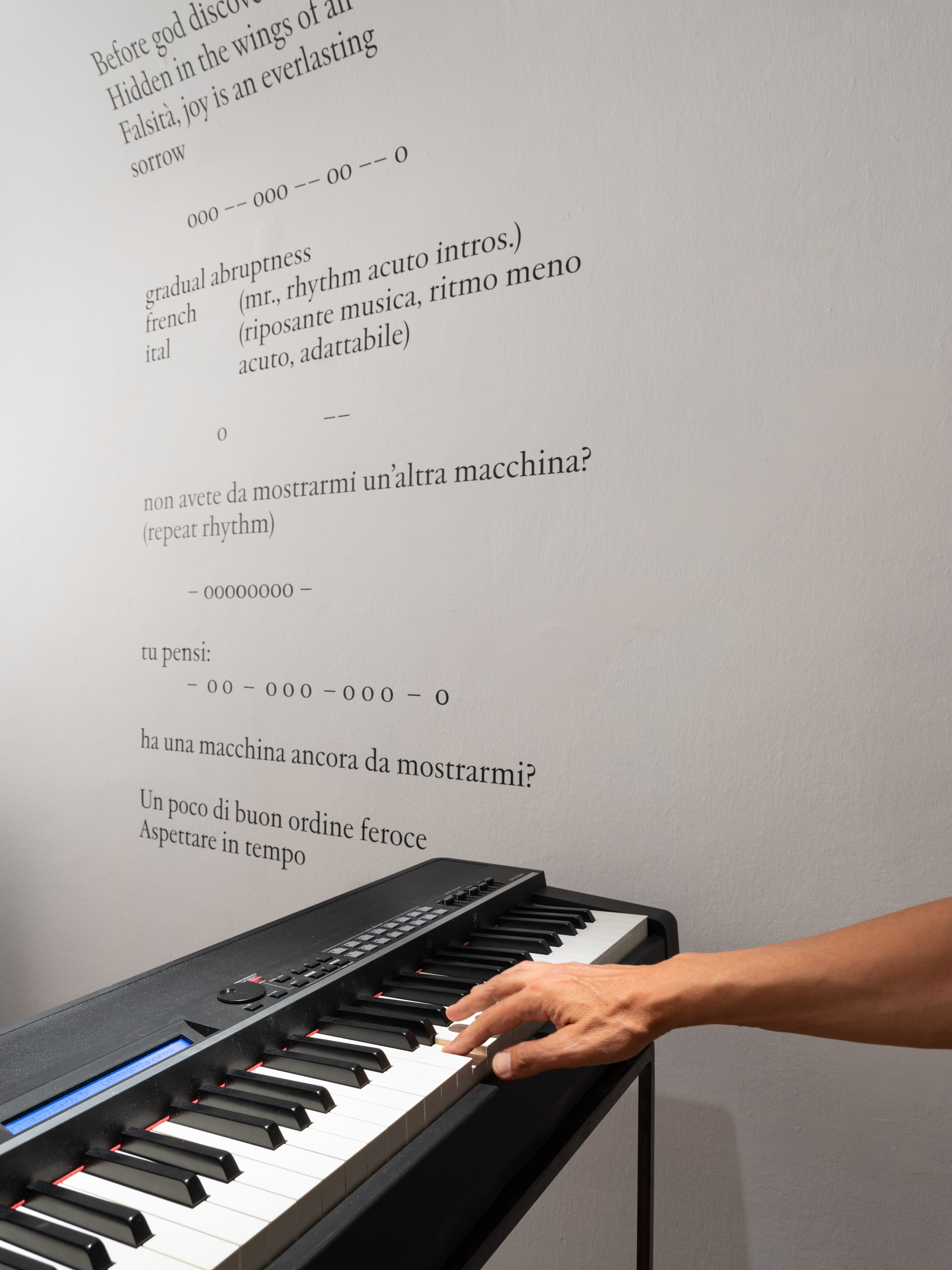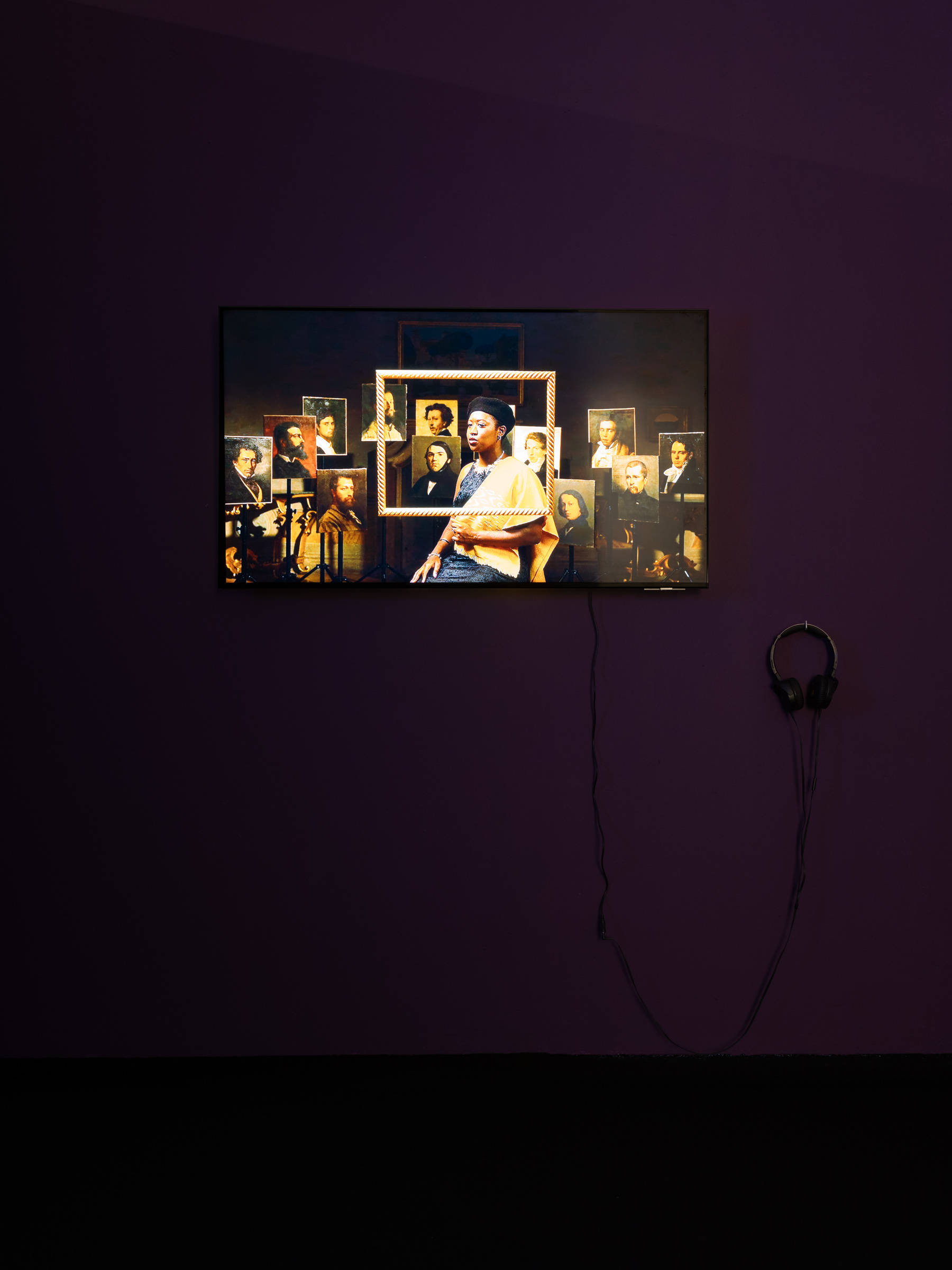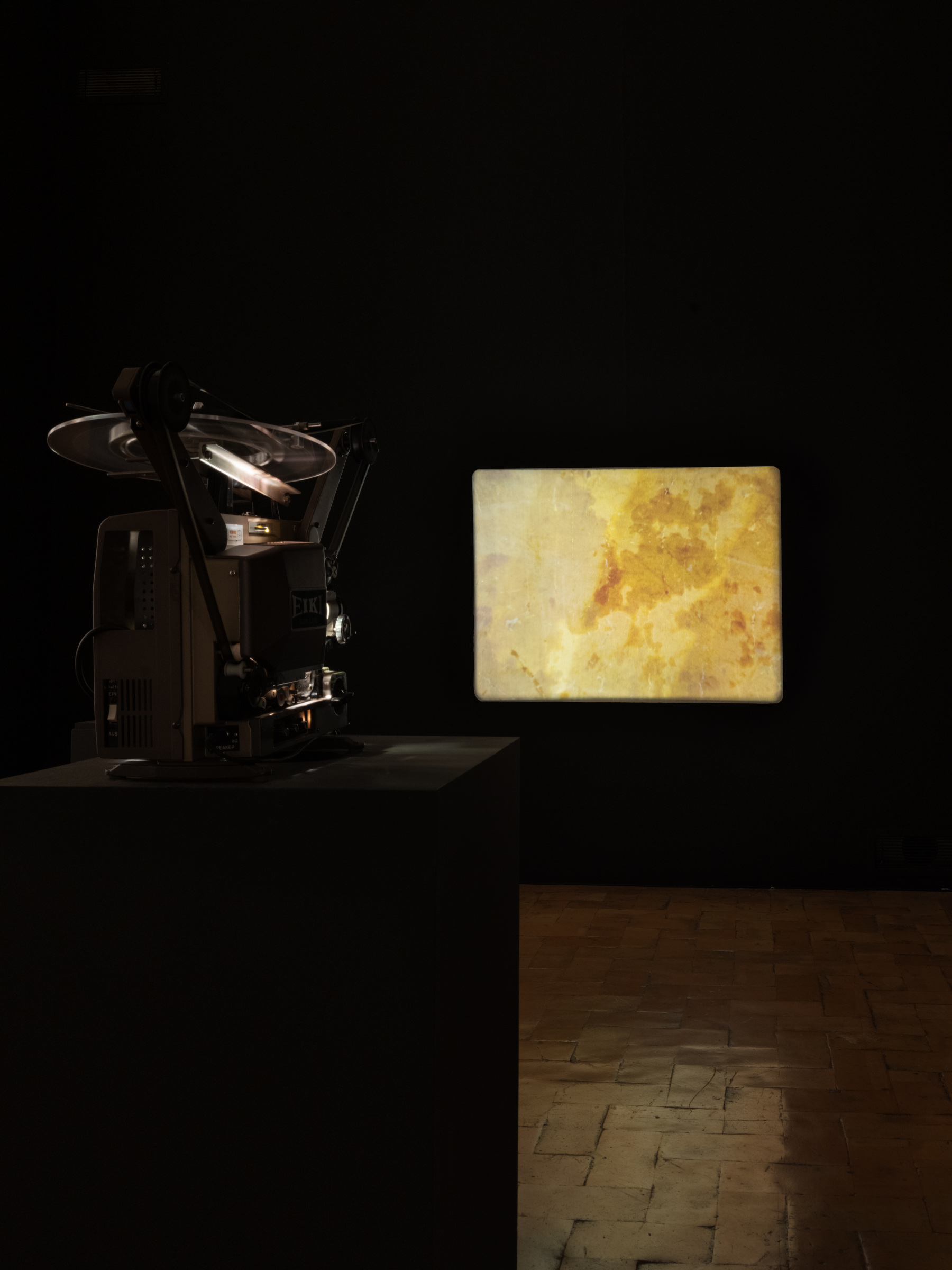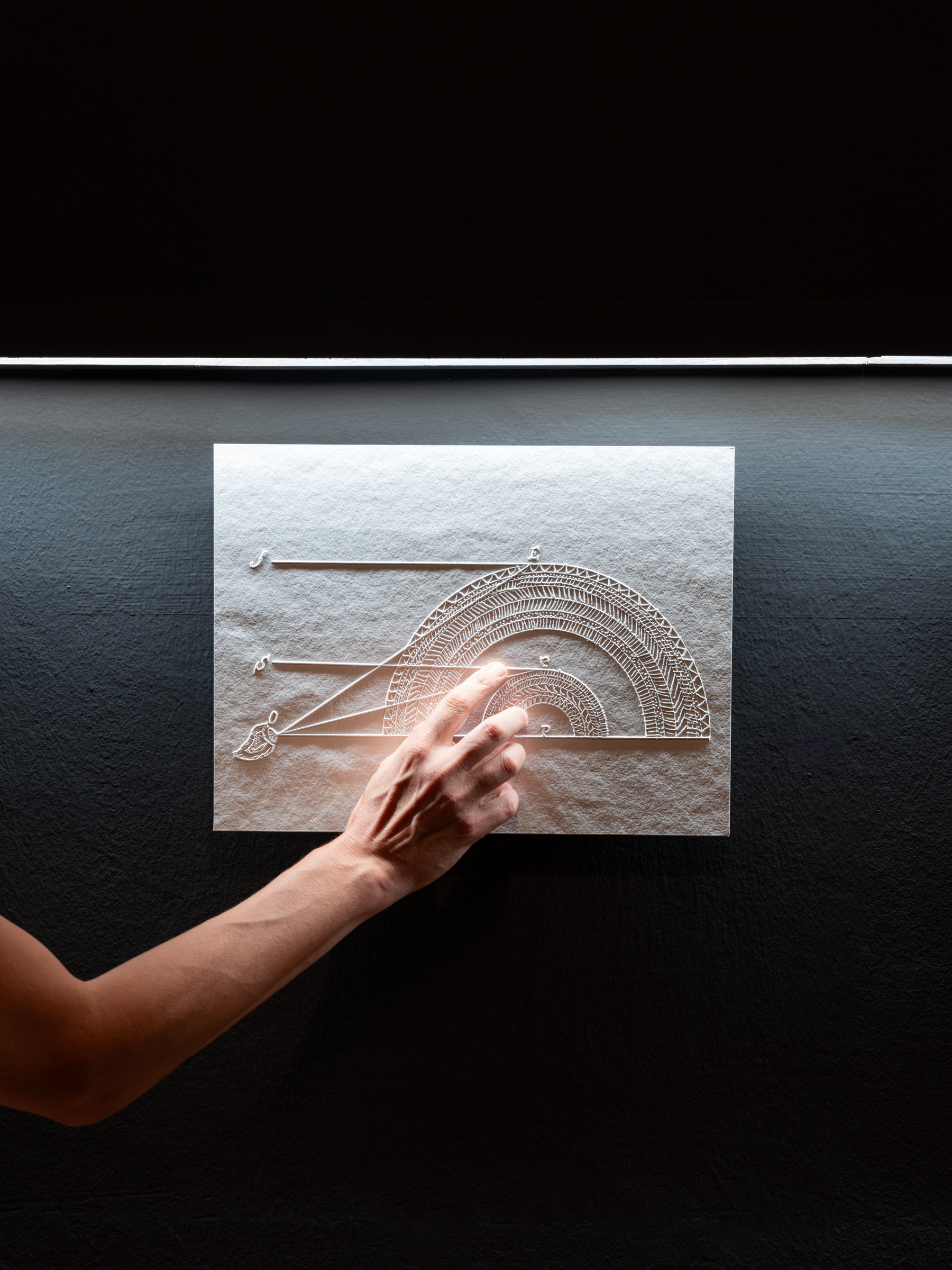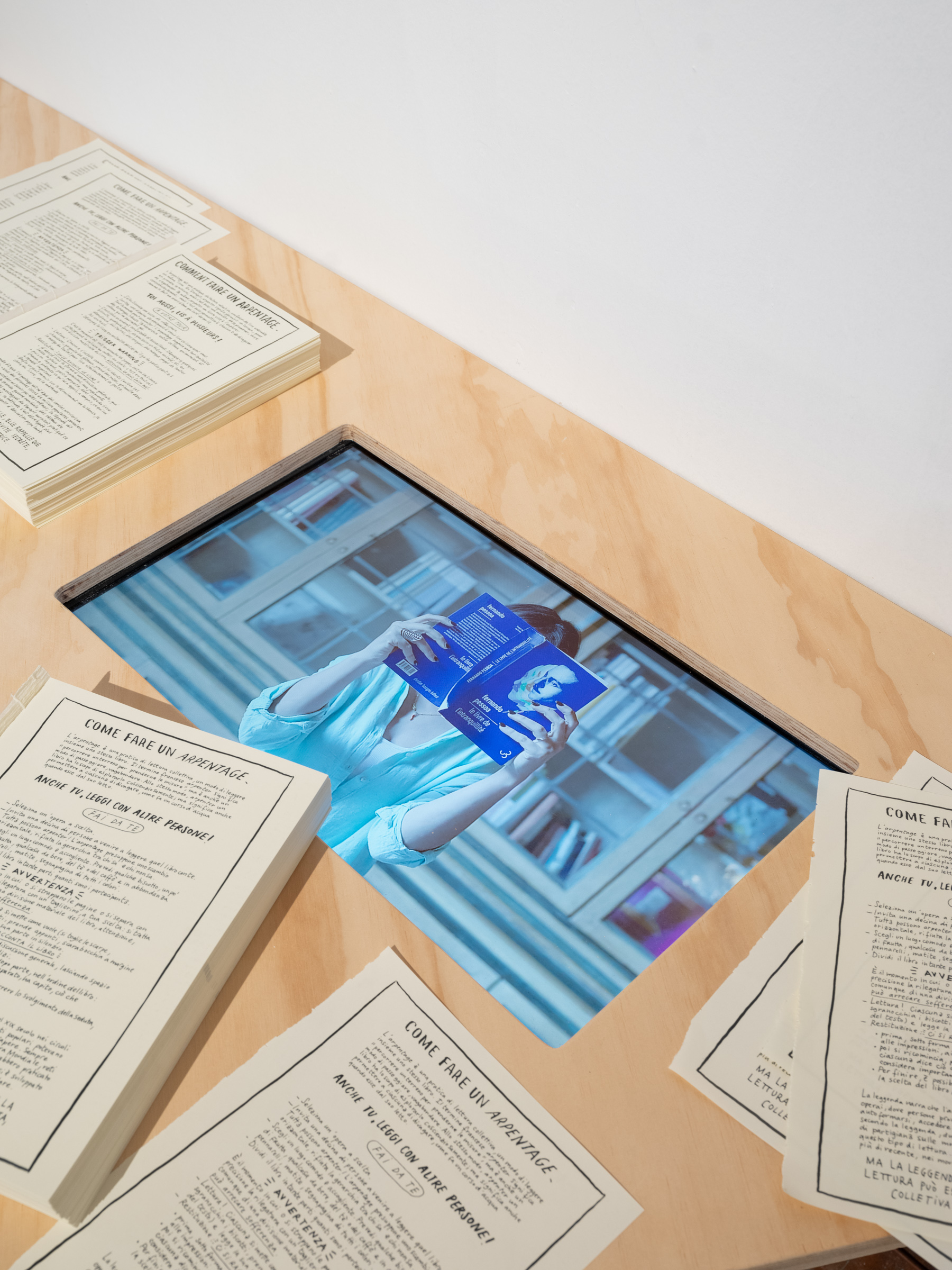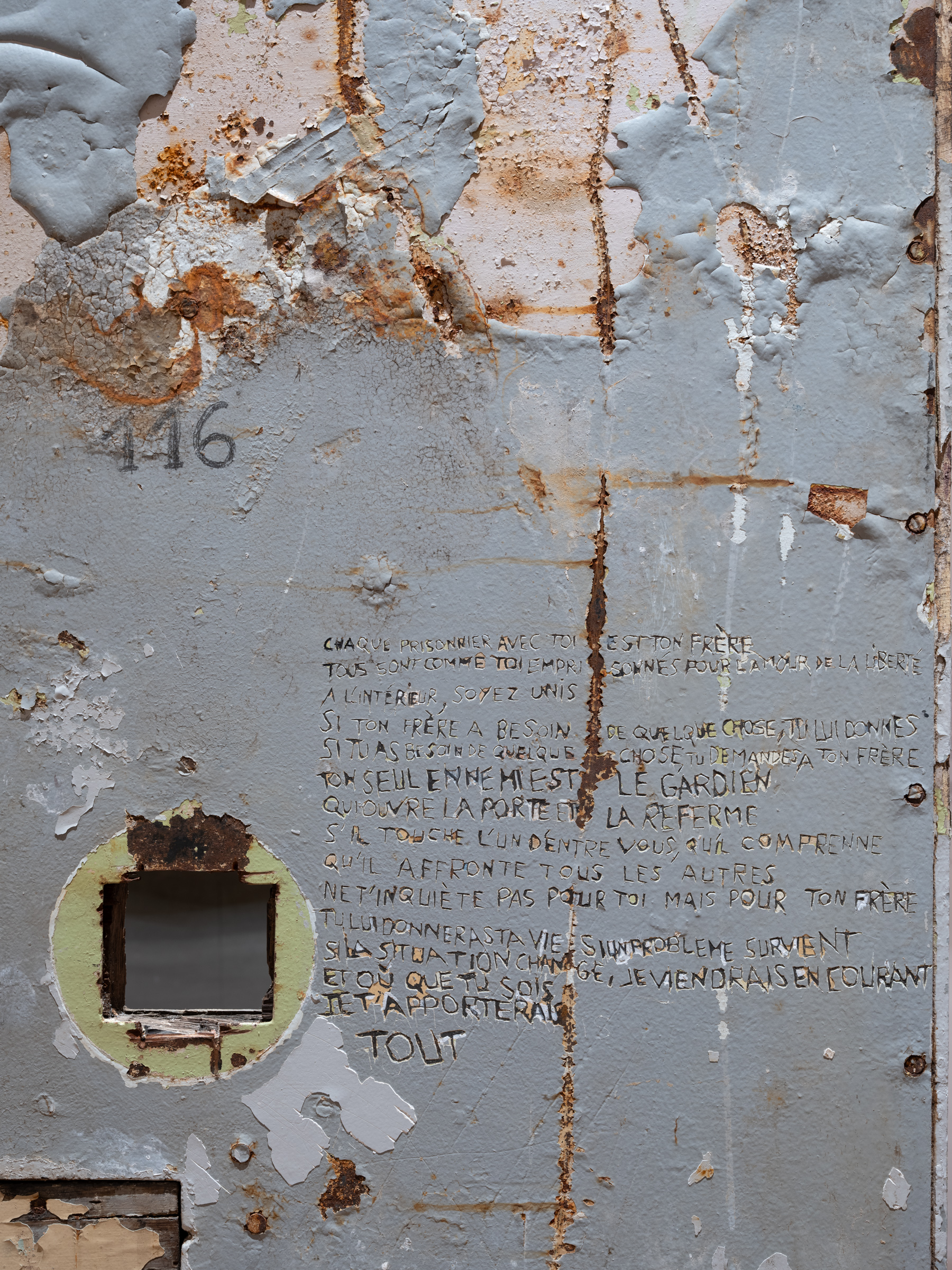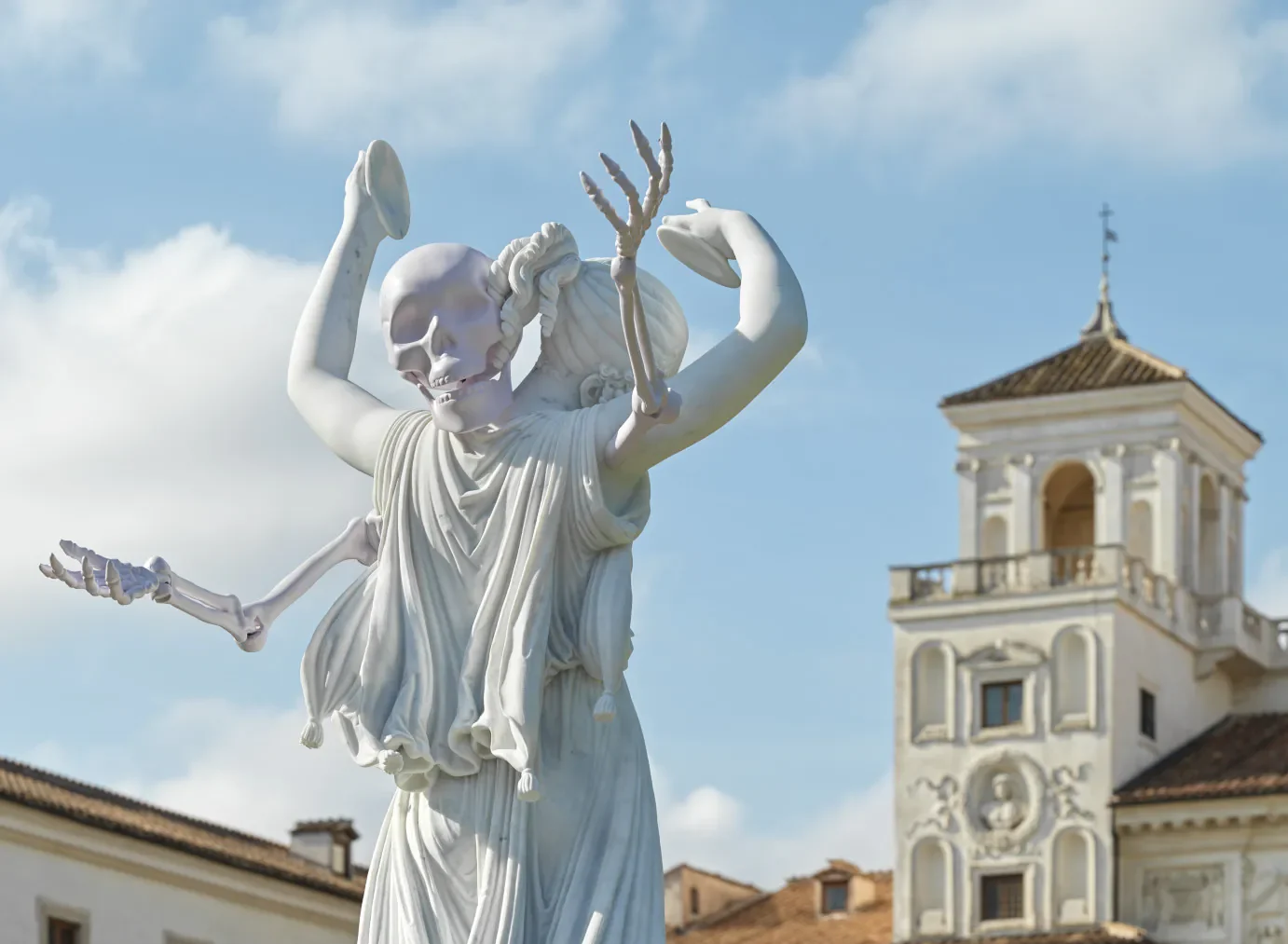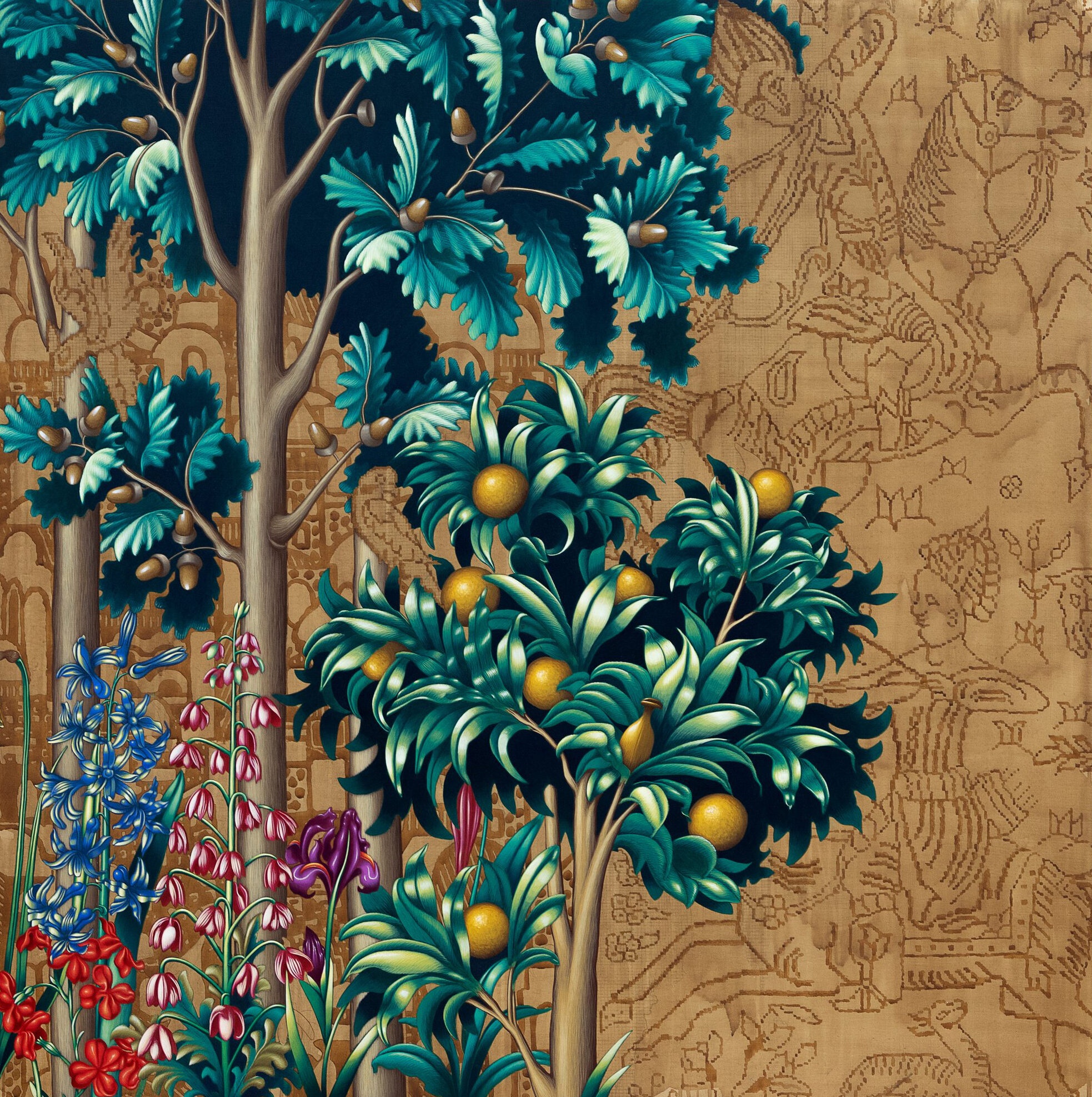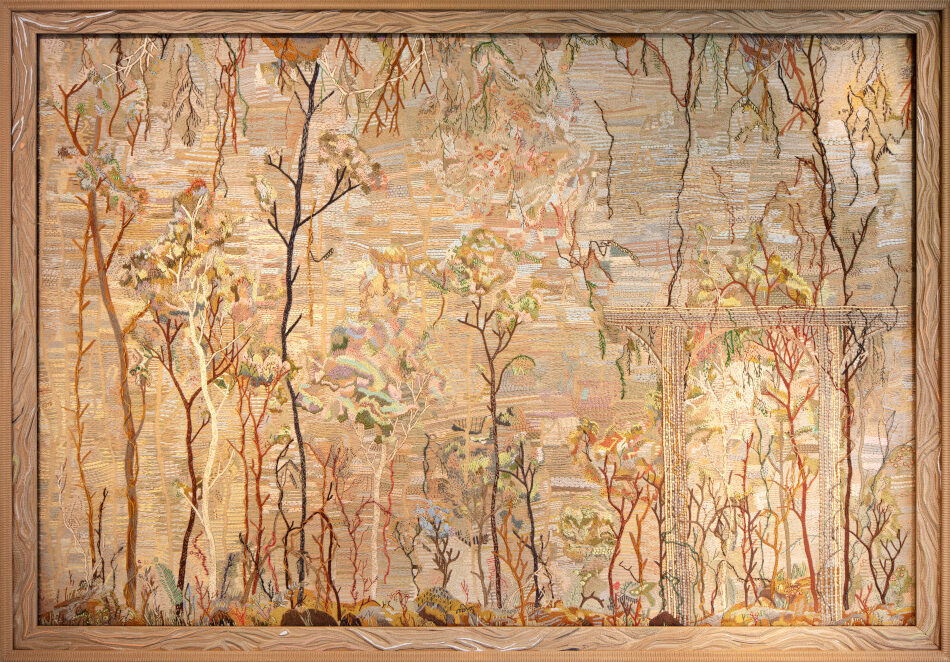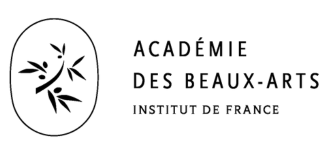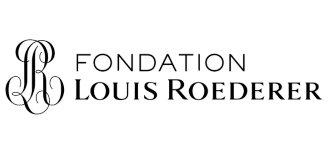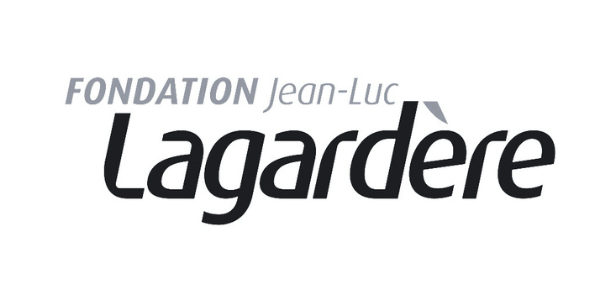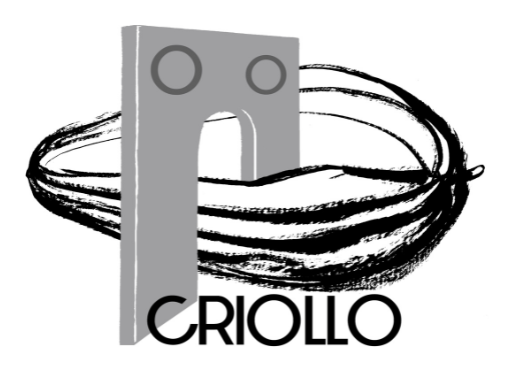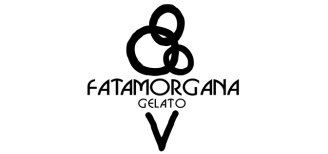Search
Changing the prose of the world
Fellows' exhibition
28.06 - 08.09.2025
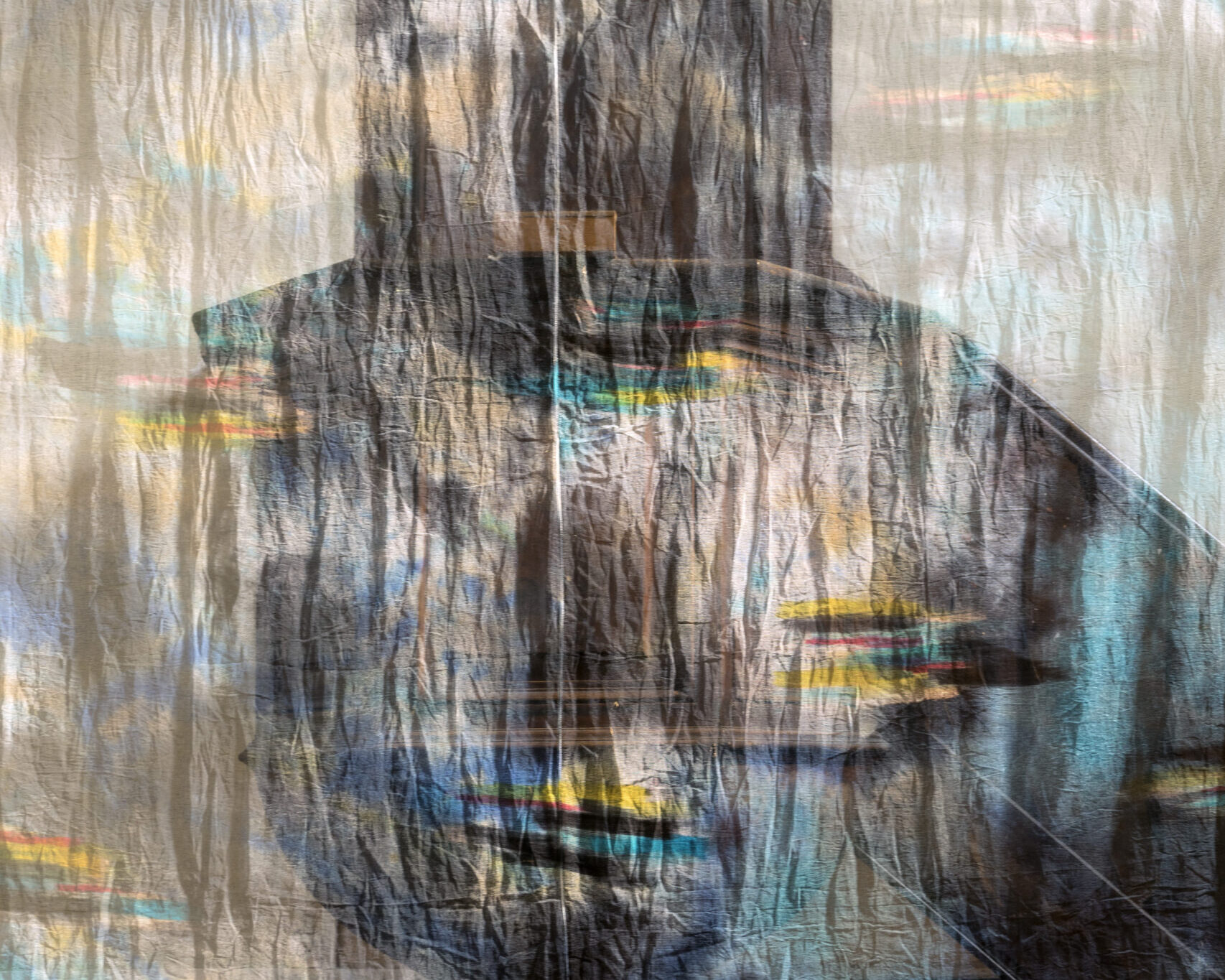
- Curator
- Lilou Vidal
As it does every year when summer is on the horizon, the French Academy in Rome brings together the projects produced by its sixteen fellows in a collective exhibition to mark the end of their year-long residence at Villa Medici. On this occasion, the artworks leave the intimacy of the studios for the exhibition spaces where they meet the public.
Changer la prose du monde
Changing the prose of the world
Mudar a prosa do mundo
Mengubah prosa dunia
تغيير نثر العالم.
Changer la prose du monde (Changing the Prose of the World) brings together the projects and works created by the fellows of the Villa Medici during their year of residency in Rome.
Presented in the plurality of the fellows’ native languages, the title of the exhibition is inspired by the first line of a short Italian poem by Amelia Rosselli (1930–1996), whose rhythmic and dissident language disrupts the foundations of normative language and dominant narratives.
Celebrating the diversity of cultures, the multidisciplinary approach and the pluriversal, critical and engaged spirit of this cohort of fellows, the imperative Changing the Prose of the World resonates with the artistic, poetic, political and ecological narratives that underpin their research.
In a collective gesture carried by a diversity of voices, the exhibition takes shape through a variety of artistic practices—from literature to musical creation, art history, visual arts, photography and cinema.
Freed languages spill across the walls and exhibition rooms of the Villa like pages of a book, thanks to a typographic intervention by Montasser Drissi, specially invited for the occasion. The visual narrative of the exhibition is punctuated by literary sentences—chosen, collected or invented by each fellow in response to Rosselli’s words.
This process of random and multilingual writing is the result of a shared breath and mindset among sixteen unique individuals who, for a year, shared the same air and space, never ceasing to reimagine the world and the horizon of possibilities.
Curator: Lilou Vidal
Graphic scenography: Montasser Drissi
Guest artists: Carlotta Bailly-Borg, Florentin Ginot, Edi Hila, Mathieu Guillin, Mathieu Lemarié, Ludovica Manzo, Flor Paichard, Yann Vasnier
Program
A programme of performances, activations and pedagocial activities will run throughout the exhibition.
Guided Tours
5, 6, 12, 13, 19, 20, 26, 27 July
2 p.m. – 7 p.m.
in English
by the students from NABA (Nuova Accademia di Belle Arti)
for visitors with an exhibition ticket, without prior reservation
Séance d’arpentages
6, 12 and 19 July
4 p.m. , 60’
Lise Wajeman in collaboration with the students from NABA, Nuova Accademia di Belle Arti
in English
for visitors with an exhibition ticket, without prior reservation
Performance musicale
That’s Where We Are
5, 12, 19 and 26 July
5 p.m., 20’
Pierre-Yves Macé performed by Ludovica Manzo
for visitors with an exhibition ticket, without prior reservation
Visits for the visually impaired
booking and information at
[email protected]
Practical information
Date: from June 28, 2025, to September 8, 2025
Opening hours: from 10:00 AM to 7:00 PM every day, except Tuesday (closed)
Full price: €10 / Reduced price: €8
TRIBU price: €1
Free for SOLO or DUO card holders
The exhibition is accompanied by an audio description system designed by Villa Medici fellows. Access to this content is available via QR.
Link to the playlist soundcloud
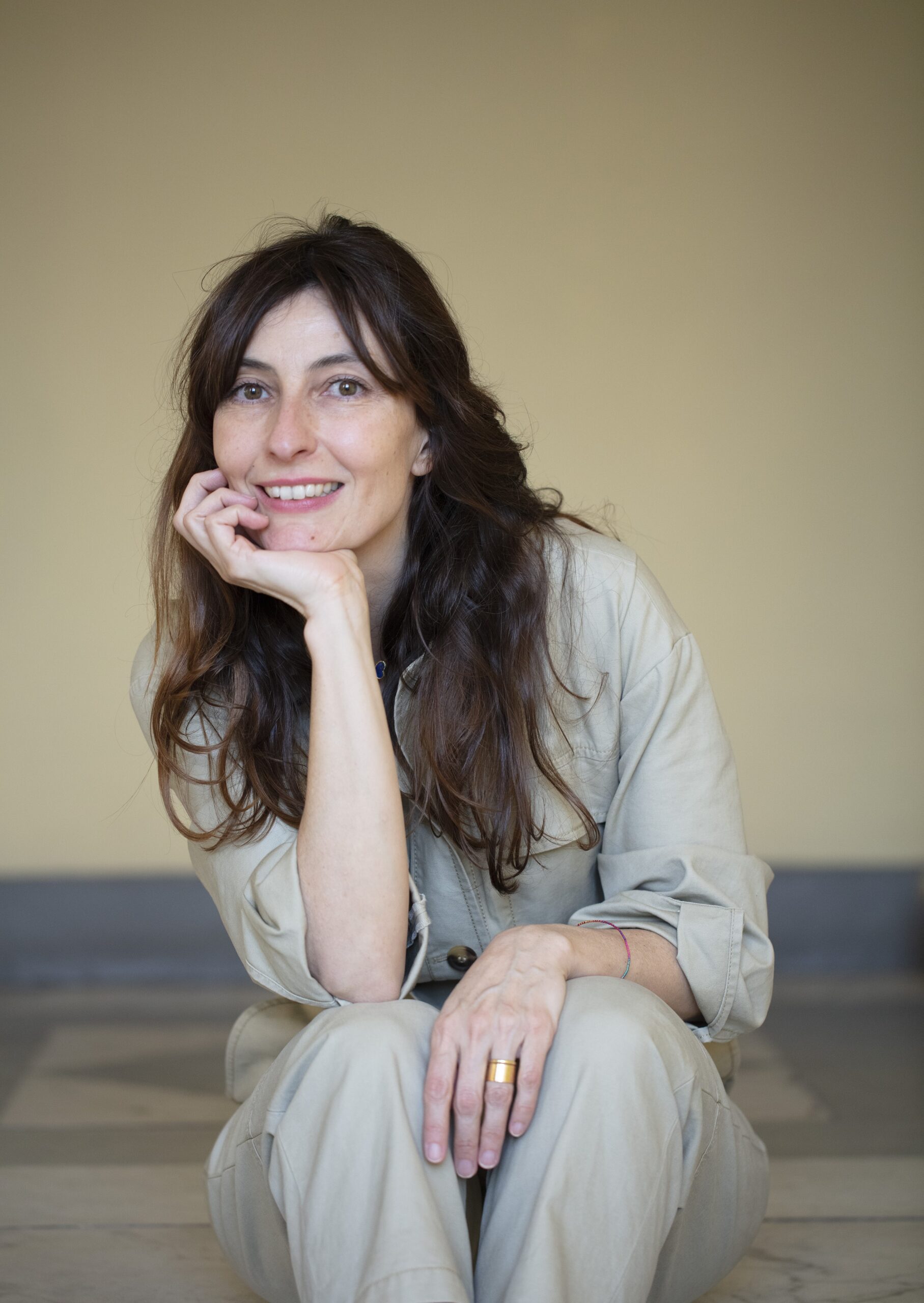
Lilou Vidal
Lilou Vidal is an exhibition curator and editor based in Turin. She has been responsible for several monographic and group exhibitions at various museums and institutions, such as The Weight of the Concrete Ezio Gribaudo, co-curated by Tom Engels, Museion Bolzano (2024) / Grazer Kunstverein (2023), Ernesto de Sousa – Exercises of Poetic Communication & other aesthetic operators, Galerias Municipais, Lisbon (2022); exhibition for the 22nd Prix Fondation Pernod Ricard, Bonaventure, This Is My Body, My Body Is Your Body, My Body Is The Body of The Word, Centre d’Art Le Delta Namur (2019–2020), Guy Mees: The Weather is Quiet Cool and Soft, MuZee, Ostend (2019) / Kunsthalle Wien, Vienna (2018).
In 2014, she founded and directed the Bureau des Réalités in Brussels, based on a...

Louisa Yousfi
Louisa Yousfi (1988, France) is a journalist and literary critic. She is the author of Rester barbare (La Fabrique, 2022), a work in which she takes up the motif of “barbarism” borrowed from the Algerian writer Kateb Yacine to offer both a political and literary account of the barbaric (re)becoming of Blacks and Arabs in France. More recently, she contributed to the collective work Contre la littérature politique (with Pierre Alferi, Nathalie Quintane, Leslie Kaplan, Tanguy Viel and Volodine, La Fabrique, 2024).

Lise Wajeman
Lise Wajeman (1973, France) is Professor of Comparative Literature at the Université Paris Cité. She works on Renaissance literature and art, and has notably published L’Amour de l’art. Eroticism of artist and spectator in the 16th century (Droz, 2015). Since 2016, she has also been following contemporary literature as a critic: she has published numerous articles in Mediapart and is a regular contributor to the podcast L’Esprit critique.

Pierre Von-Ow
Pierre Von-Ow (1992, France) is an art history researcher and curator, with degrees from Université Paris 1 Panthéon-Sorbonne and Columbia University. His work focuses on the intersections between art and science in the modern era. In 2024, he defended a thesis at Yale University on the history of perspective in Great Britain and the British Empire in the 17th and 18th centuries. In 2021, he curated the virtual exhibition William Hogarth’s Topographies for the Lewis Walpole Library. Among his publications, he recently co-edited an anthology of Jean-Claude Lebensztejn’s writings on cinema(Propos filmiques, Paris, Macula, 2021) and a special issue of the journal Écrans on William Hogarth and cinema (Paris, Garnier, 2024).

Ana Vaz
Ana Vaz (1986, Brazil) is an artist and filmmaker born in the Brazilian Midwest, inhabited by the ghosts buried by its modernist capital: Brasília. Her filmography provokes and questions cinema as an art of the (in)visible and an instrument capable of dehumanizing the human, expanding connections with other-than-human or spectral forms of life. As a consequence or expansion of his cinematography, his artistic activities are also embodied in writing, critical pedagogy, installations and collective walks.

Seynabou Sonko
Seynabou Sonko (1993, France) is a Paris-based artist from the Senegalese diaspora. A graduate of UQAM in Montreal, ENSAV La Cambre in Brussels and Université Paris 8, her first literary steps were marked by the publication of texts in magazines such as Sabir, Muscle and Sève. In 2023, she published her first novel, Djinns, with Editions Grasset, winning the Prix du Cheval Blanc and the Prix de la Porte Dorée. Seynabou Sonko is also a musician, screenwriter and singer. Her musical universe, like her writing, testifies to an overflowing creativity and an assertive desire to break boundaries.

Claudia Jane Scroccaro
Claudia Jane Scroccaro (1984, Italy) is an Italian composer based in Paris, where she teaches electronic music at Ircam. She seeks to achieve coherence between instrumental and electronic writing, structured through personal computer-assisted composition tools. Her music oscillates between two extreme temporalities, alternating between overflowing, compulsive rhythms and immersive, introspective explorations, interwoven with the expressiveness of the spoken voice.
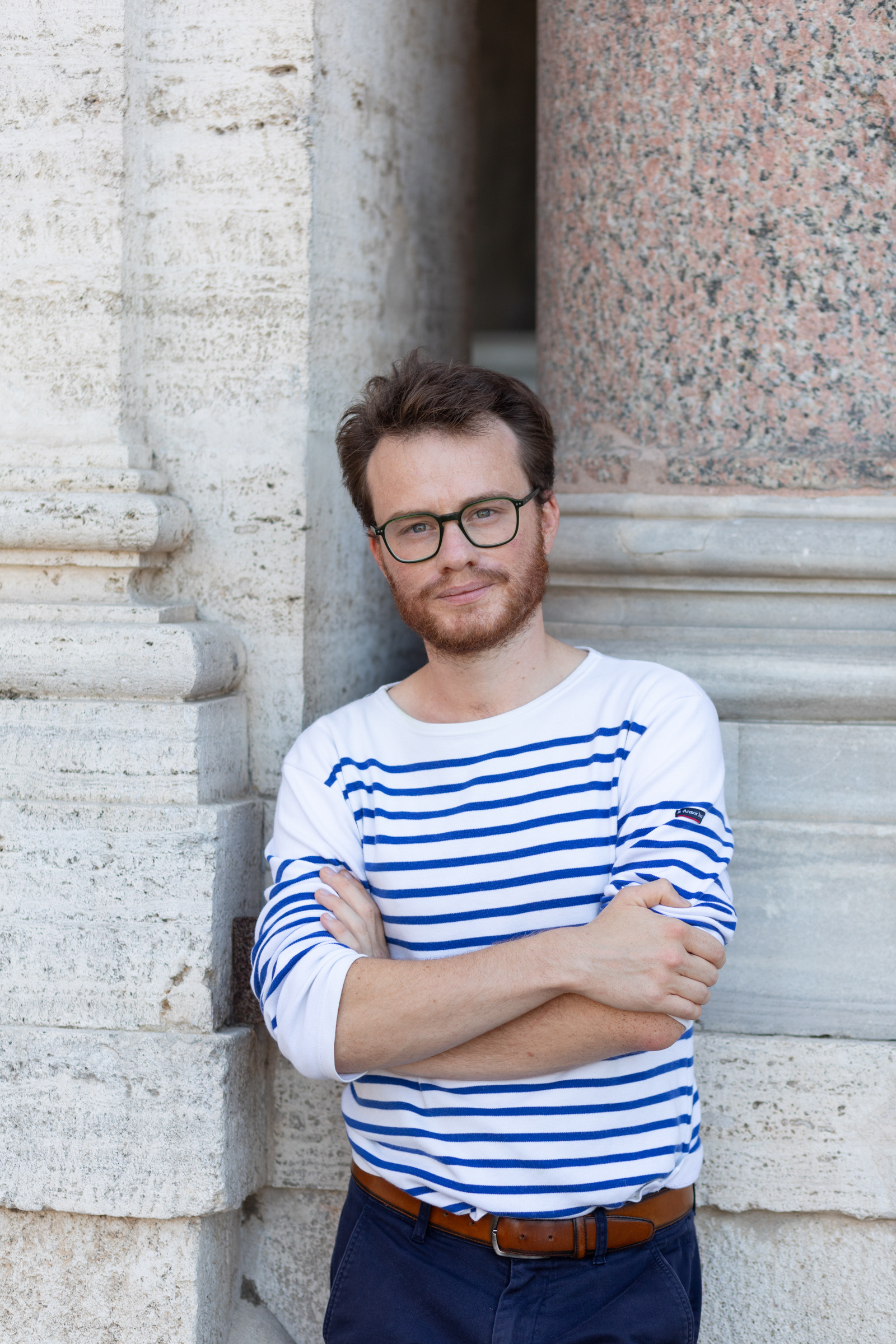
Nicolas Sarzeaud
Nicolas Sarzeaud (1992, France), is a graduate of the École du Louvre and holds a doctorate from the EHESS, and is an associate member of the Centre de Recherche Historique and FRS-FNRS research fellow at the Université catholique de Louvain. In 2021, he defended a thesis on the cult of the Shrouds of Christ between the 14th and 16th centuries, published by Cerf in 2024 under the title Les Suaires du Christ en Occident. He has taught at the Université Lumière Lyon II and the Université de Lorraine, and has published numerous articles on the cult of images in the late Middle Ages, and the way they were shown, viewed and disseminated thanks to an intense production of copies, which he places in a long history of facsimiles.

Clovis Maillet
Clovis Maillet (1981, France) has published La parenté hagiographique (2014) and Les genres fluides (2020). He has edited several issues of scientific journals while conducting research into the uses of history in contemporary art(Witch TV, 2021; Un Moyen âge émancipateur, with Thomas Golsenne, 2021). Clovis Maillet and Louise Hervé have been working in performance, installation and film since the early 2000s. They have published Attraction Étrange, 2013, Spectacles sans objet, 2015 and L’Iguane, 2018. Clovis Maillet co-wrote the show Medieval Crack with the Foulles collective.

Pierre-Yves Macé
Pierre-Yves Macé (1980, France) is a composer. His work crosses electroacoustic and instrumental music with a method that borrows from musique concrète, taking recorded sound, document or archive as his primary source. He has released CDs on the Tzadik, Sub Rosa and Brocoli labels. He writes scores for the L’Instant donné, Les Cris de Paris and Ictus ensembles. He regularly collaborates with directors (Sylvain Creuzevault, Joris Lacoste), choreographers (Emmanuelle Hunh, Liz Santoro and Pierre Godard) and writers (Pierre Senges, Mathieu Larnaudie). His music was the subject of a Portrait for the 2023 edition of the Festival d’Automne à Paris.

Amalia Laurent
Amalia Laurent (1992, France) is an artist and researcher who lives and works between Paris and Nîmes. Her work addresses topographical, geographical and cartographic themes that are both real and fantasized. Her obsession with alternative realities has given rise to a body of work – stainings, installations, performances, sculptures – that makes tangible the boundaries between real and/or parallel worlds. She is currently researching the links between architectural arrangements and processional practices at the EHESS, and is also a member of the Javanese music group Genthasari of the Pantcha Indra association.

Alessandro Gallicchio
Director of the History of Art Department (since 2025)
Fellow at the French Academy in Rome – Villa Medici (2024 – 2025)
Bio
Alessandro Gallicchio (1986, Italy) is a lecturer in contemporary art history at Sorbonne University, a member of the André-Chastel Centre, and an associate researcher at CETOBaC. He holds a PhD in art history from the universities of Florence, Paris-Sorbonne, and Bonn (2016), and he pursues his research through methodologies developed by the social and political history of art. His initial work focused on the influence of nationalism and antisemitism in the construction of artistic discourse. He later turned to examining how totalitarian regimes express propaganda not only through art criticism but also within the urban space. Starting from the material...

Abdessamad El Montassir
Abdessamad El Montassir (1989, Morocco) is a visual artist. Collaborating with scientists, citizen-witnesses and activists, he develops an artistic practice at the crossroads of research and creation. His works are the fruit of a meticulous process in which the collection of immaterial testimonies and collective narratives revives oral memories that are often buried and silenced by official history.

Nicolas Daubanes
Nicolas Daubanes (1983, France) is an artist living and working in Perpignan. For over 15 years, he has been working with the prison world (drawings, installations, videos), based on immersive residencies in prisons. Nicolas Daubanes won the Prix Mezzanine Sud les Abattoirs 2017, the Prix des Amis du Palais de Tokyo in 2018 and the Drawing Now prize in 2021. He presented a major installation at the Lyon Biennale in 2022. In 2025, he will present a solo exhibition at the Pantheon in Paris.

Jérôme Printemps Clément-Wilz
Jérôme Printemps Clément-Wilz (France) is a writer-director who works mainly with documentary material. His films have been selected at festivals in Rotterdam, Amsterdam and Toronto, and are included in the collections of the Cinémathèque Française. He has won the Grand Prix at Doxa, the Hong Kong Film Festival and a Star from LaSCAM. His work also extends from performance to photography and installation. With the collectives La Tendre Émeute, Epectase and Carmel Miracle, he has performed at the Zénith de Paris and the Musée TRAFO, and has been exhibited at Circulation(s) and Mécènes du Sud. He is also a founding member of Ateliers Wonder.

Bianca Bondi
Bianca Bondi (1986, South Africa) is a visual artist based in Paris. Her practice involves the activation or elevation of mundane objects through the use of chemical reactions. The materials she works with are chosen for their transformative potential or intrinsic properties, emphasizing the interconnectedness of things in the world, their transience, and revealing the cycles of life and death. Her work has been exhibited at Lafayette Anticipations (2023), Fondation Louis Vuitton (2021), Casino Luxembourg (2020), and as part of the Biennales de Lyon 2019, Busan 2020, and Thaïlande 2021.

Haig Aivazian
Haig Aivazian (1980, Lebanon) is a visual artist based in Beirut. His work traverses moving image, sculpture/installation, drawing and performance, and explores how power integrates, affects and displaces people, objects, animals, landscape and architecture. Between 2020 and 2022, he was artistic director of the Beirut Art Center, where he founded and directed the digital publication thederivative.org.


